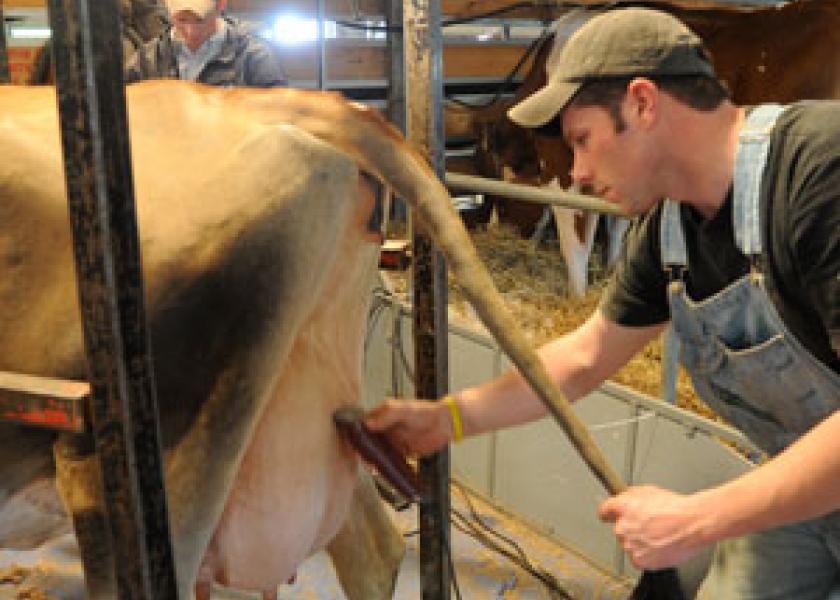Fitted By Professionals

Helping the cow make a good first impression
Professional cattle fitter Matt Templeton must be extremely good at what he does. How else can you explain why top U.S. dairy cattle breeders have shelled out thousands of dollars year after year to bring him halfway around the world so he can spend a week getting their cows ready for the World Dairy Expo show ring?
"At a big show like this, it’s all about helping the cow make a good first impression," Templeton says. "There are so many outstanding cows in each class that the judges don’t have that much time to look at each animal. If you can give a cow that X factor that will catch the judges’ eye and get them to take a closer look, you’ve done your job."
Templeton, who grew up on a 250-cow dairy farm in Victoria, Australia, started out in the fitting business eleven years ago at age 16. After working shows in his home country, he made his first trip to the U.S. in 2001. "I came over in July and stayed until November, going from show to show, including Expo. The fitters in North America are the best in the world, and I wanted to learn from them."
Over the next 10 years, Templeton made eight return trips to the U.S. for Expo. Early on, he worked for several different breeders. During his last five trips, though, he has worked exclusively for Budjon Farms of Lomira, Wis. "Matt is a hard worker, very disciplined and extremely loyal to our string," says Kelli Cull, part of the Budjon management team. "Most importantly, the quality of his workmanship is second to none."
Along with Australia and North America, Templeton has worked shows in New Zealand, Germany and Brazil. "There isn’t a lot of difference in fitting from one country to another," he says. "It’s all about having good cows to start with. A cow with a nice, high, wide udder, balanced in her frame, with width, and depth to her rib, is going to do well anywhere in the world. If you don’t have that good cow, it won’t matter how good a job you do clipping her."
Templeton’s days at Expo typically start with chores—feeding, milking, bedding stalls—at 4 a.m. "You can’t think that you’re too good to do any of the basic things," he says. "You have to know what the cows are doing. You have to make sure they’re eating and making milk and on top of their game at all times. And you have to listen to the people around you. You can learn from anybody."
He starts clipping cows at 7 a.m. and continues until 8 or 9 p.m. "You’re on your feet and your knees all day long. It can be physically demanding." The job can be mentally draining as well. "You're always assessing the cow, sizing her up, looking for any faults that she might have and thinking about what you can do to correct those faults."
As stressful as the job is at times, Templeton says he doesn’t allow the pressure to get to him. "If you’re too uptight, the cows can sense it, and that can affect them once they get into the ring," he says. "You just have to go with the flow."







